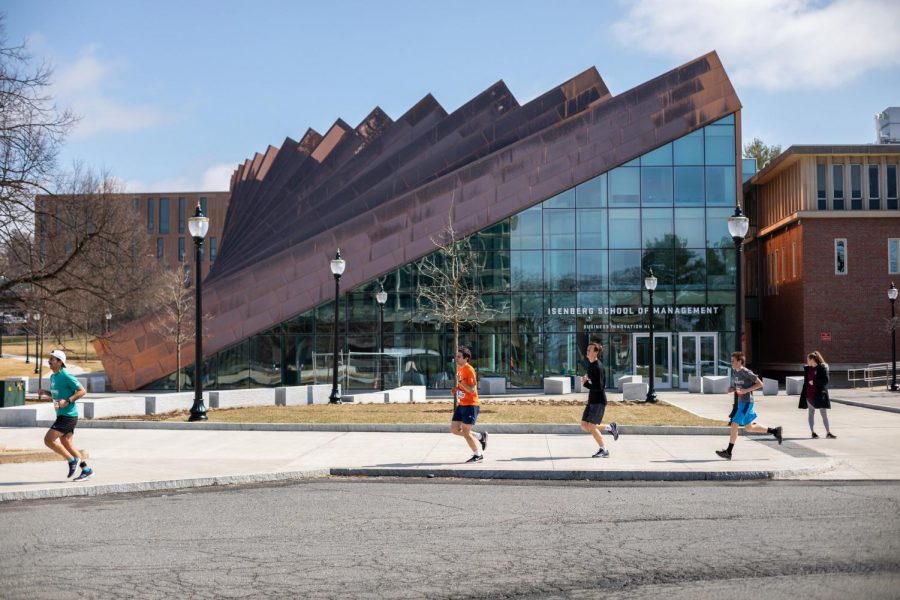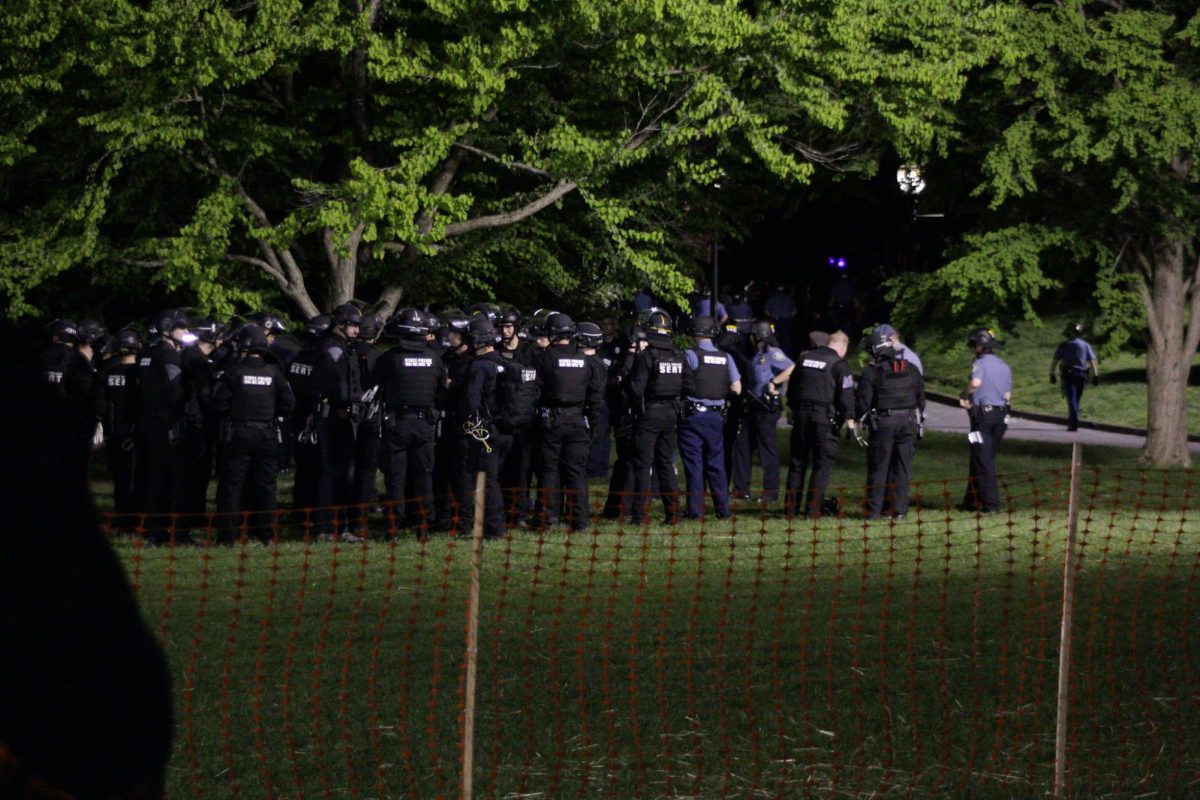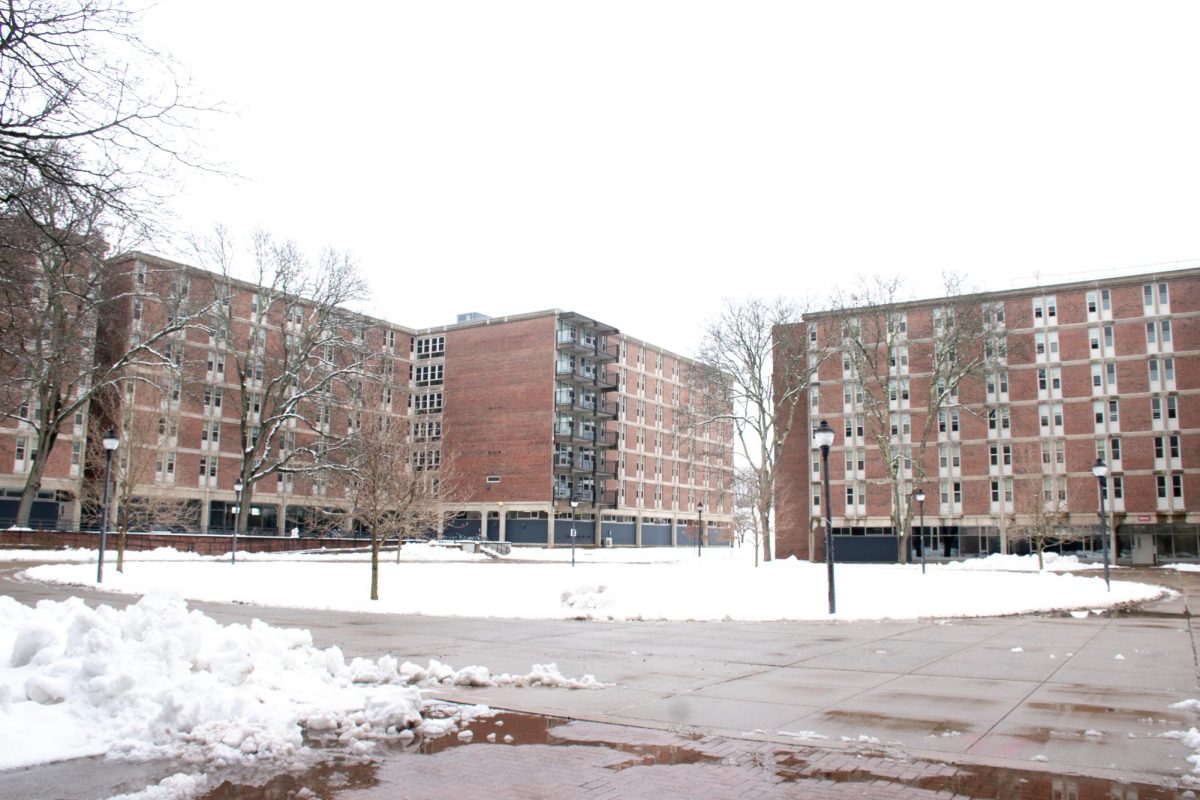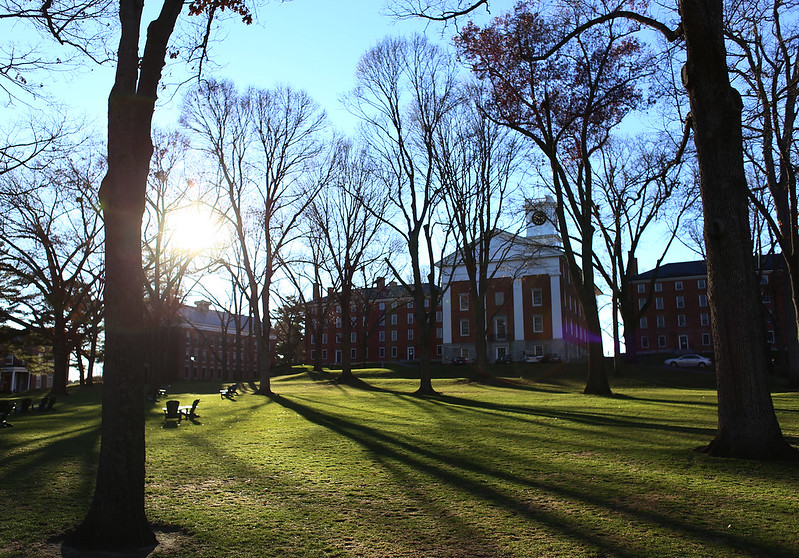At any expanding college campus in the U.S., sentiments such as the following can be heard: “Wow, maybe if the administration didn’t spend so much money on construction, I wouldn’t be paying $50,000 a year to go here!”
This sentiment is ubiquitous at the University of Massachusetts, where construction has completely engulfed our campus. Throughout the past two years, UMass has worked on six construction projects; four new projects and two renovations. It’s hard to look at these projects as a student without thinking about the subsequent tuition hikes.
Between 1960 and 1975, UMass saw its main period of infrastructural growth. Specifically, John Lederle, UMass president between 1960–1970, led the institution on an expansion now known as the “Dynamic Decade.” During this 15-year span, UMass constructed most of its present campus. The structures built during this time comprised of seven million square feet of space on campus. UMass has only built approximately four million more square feet in the four decades since.
In 1960, the cost to attend UMass as an in-state student was $806. In 1975, after a 15-year construction blitz, the cost to attend was $1870.Taking inflation into account, $806 in 1960 had the same buying power as $1450 in 1975, meaning that the cost of attending UMass went up by 29 percent relative to inflation over that 15-year period.
Now, let’s look at the most recent 15-year construction blitz, which has added less than half the amount of usable space to campus. Fifteen years ago, in 2004, the cost of attending UMass (in-state) was $13,980. Today, in 2019, the cost of attending is $29,393. To go back to the example of inflation, $13,980 in 2004 had the same buying power as $19,000 today, meaning that the cost of attending UMass relative to inflation has gone up by 58 percent over the last 15 years.
Compared to the years 1960 through 1975, UMass has built less than half as much space during the last 15 years, and yet tuition costs have risen twice as quickly. So construction might have less of an effect on tuition than some will have you believe.
This is not to say that recent construction has had no effect on tuition, because it clearly isn’t free. Still, considering that much of the construction is funded through large donations – for instance, the Isenberg Business Innovation Hub- and that lots of construction on campus replaces or renovates crumbling buildings in need of repair, it’s also unreasonable to say that this construction isn’t necessary to attract new students and maintain a functioning campus.
All things considered, the real culprit behind that huge number on your tuition bill is something far more subtle. When universities rely on public funding, they are subject to the quirks of an ever-changing state legislature. When that legislature views the state university system as a large line item that should be cut to meet their budget targets, well, it’s easy to see how it will impact students.
Single-digit percent yearly cuts don’t seem consequential from the perspective of public servants trying to lower taxes for constituents. For the students, however, it’s death by a thousand cuts. Without the contingency of a huge endowment, public universities must raise tuition to stay afloat.
Think about that next time you go to the ballot box.
Adam Lechowicz




















Michael • Sep 10, 2019 at 11:46 am
$8.27 million in budget reductions this past year. The only reasonable way to chip away at that (because the state senate required a freeze on tuition hikes) is to admit more out-of-state students. Which in turn, reduces the admission of in-state students. Pretty ironic by the state senate to do that to the state’s flagship public university.
This is a deep topic; Collegian should explore more here!
Ed Cutting • Sep 10, 2019 at 10:13 am
$806 in 1960 would be $6,986.36 today — and UMass is over FOUR TIMES that!
.
And you can’t blame the legislature for this because UMass currently gets, in inflation-adjusted dollars, more than it did in the past. There was a 7% increase in this year’s budget alone, that’s not a cut. The problem is that UMass is increasing it’s spending so much that the increases in state money can’t keep up with it..
,
Then one needs to remember that Lederlie was building in anticipation of the Baby Boomers (born 1945-1960) attending college. The opposite is true now — the number of 18-year-olds will decline over the next 15 years and particularly in the Northeast. Look at Hampshire College — four have closed in Vermont, a half dozen in Boston (including Mount Ida), and there are a lot more on the edge.
.
So where is UMass going to find the bodies for the Class of 2030?
.
And one other thing — a while back, Forbes Magazine calculated the actual costs of various colleges when financial aid was included — and, according to them, Amherst College is cheaper than UMass!
.
UMass has a spending problem, and the recently-announced decision to tear down the perfectly-good Lincoln and North Village Apartments and spend $20 Million to replace them is yet another example of the largess…..